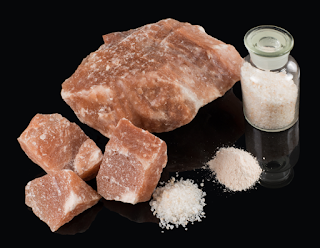Understanding Spondylitis, Back Pain, and Degenerative Disc Disease
Spondylitis, back pain, and degenerative disc disease are common conditions that often overlap, causing confusion for those who suffer from them. These disorders affect the spine and can lead to debilitating discomfort and functional limitations. This blog aims to clarify these conditions, their interrelationships, and the importance of proper management through physiotherapy.
What is Spondylitis?
Spondylitis refers to inflammation of the vertebrae in the spine, leading to pain, stiffness, and potential loss of movement. The most common type is ankylosing spondylitis (AS), an autoimmune condition where the body’s immune system mistakenly attacks the spinal joints, causing inflammation. Over time, this can lead to the fusion of vertebrae, making the spine rigid and less mobile.
However, not all spondylitis is due to ankylosing spondylitis. Other forms of spondylitis, such as non-specific spondylitis, may be linked to infections, trauma, or other inflammatory diseases. Regardless of the cause, spondylitis can significantly impact mobility and quality of life.
Spondylitis and Back Pain
Back pain is one of the most common symptoms of spondylitis. The inflammation in the spinal joints can lead to swelling and pain, especially in the lower back, hips, and neck. As the condition progresses, the pain may worsen with prolonged sitting, standing, or movement.
For people with ankylosing spondylitis, pain often begins in the lower back or buttocks, and the inflammation can worsen at night or in the morning. As the condition advances, the body’s compensatory mechanisms can lead to poor posture, causing further discomfort and stiffness.
Degenerative Disc Disease and Back Pain
Degenerative disc disease (DDD) refers to the natural wear and tear that occurs in the intervertebral discs between the vertebrae. As we age, the discs lose their hydration and elasticity, making them less effective at absorbing shock. This degeneration can lead to disc bulging, herniation, or even collapse, causing significant back pain.
While degenerative disc disease is often linked to the aging process, it can also be influenced by factors such as genetics, injury, or poor posture. The pain from DDD is typically felt in the lower back or neck, depending on which part of the spine is affected. Unlike spondylitis, DDD does not usually involve inflammation but can lead to nerve compression and radiating pain, such as sciatica.
How Spondylitis and Degenerative Disc Disease Relate
While spondylitis and degenerative disc disease are distinct conditions, they can sometimes coexist. Both conditions can cause similar symptoms, such as chronic back pain, stiffness, and limited movement. In fact, the inflammation from spondylitis can exacerbate degenerative changes in the spine, leading to faster disc degeneration.
Additionally, the fusion of spinal joints caused by ankylosing spondylitis may lead to compensatory movement patterns that strain the discs, contributing to degenerative changes in the affected areas. This overlap can make diagnosis and treatment more complex, requiring careful assessment by a physiotherapist or healthcare professional.
Physiotherapy: The Key to Management
Physiotherapy plays a crucial role in managing both spondylitis and degenerative disc disease. The primary goals of physiotherapy for these conditions are to reduce pain, improve posture, increase mobility, and strengthen the muscles supporting the spine.
1. Pain Management
Physiotherapists use various techniques, such as heat/cold therapy, electrical modalities (e.g., TENS), and soft tissue mobilization to reduce pain and inflammation.
2. Exercise Therapy
Tailored exercise programs are designed to improve flexibility, strength, and endurance. For spondylitis, exercises focus on spinal mobility and stretching to alleviate stiffness. For degenerative disc disease, strengthening the muscles of the core and back is essential to provide support to the weakened discs.
3. Postural Correction
Poor posture can worsen both spondylitis and degenerative disc disease. Physiotherapists work with patients to correct posture through awareness training and exercises that promote a neutral spine alignment.
4. Manual Therapy
Techniques such as spinal mobilization or manipulation can help improve spinal movement and reduce discomfort. These should only be performed by trained professionals as part of a comprehensive treatment plan.
Lifestyle Modifications and Preventative Measures
Along with physiotherapy, certain lifestyle changes can help manage and prevent the progression of spondylitis and degenerative disc disease. These include:
- Maintaining a healthy weight to reduce stress on the spine.
- Regular low-impact exercise, such as swimming or walking, to improve flexibility and strength without overloading the joints.
- Proper ergonomics at work and during daily activities to reduce strain on the back.
- Stretching and mobility exercises to maintain flexibility and range of motion in the spine.
Conclusion
Spondylitis, back pain, and degenerative disc disease are conditions that often intersect, making effective management essential. A comprehensive approach that includes physiotherapy, exercise, and lifestyle modifications can significantly improve quality of life for individuals suffering from these conditions. If you're experiencing persistent back pain or discomfort, it's essential to consult a healthcare professional who can provide a tailored treatment plan to manage symptoms and help you maintain optimal spinal health.
Remember, early intervention is key, and physiotherapy can be a game-changer in managing both spondylitis and degenerative disc disease effectively.















